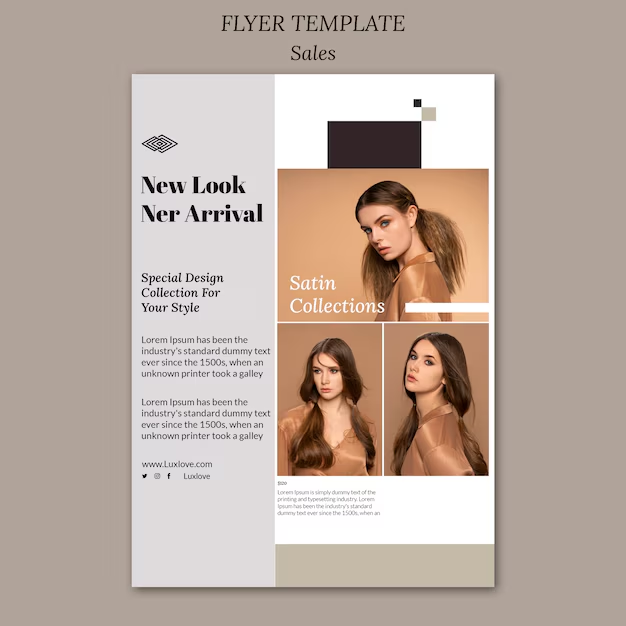Creating a fashion magazine design brief example is no small feat. With countless creative elements and a need for cohesive visual storytelling, a well-crafted design brief is the backbone of any successful publication. A design brief acts as a roadmap, guiding the team through the creative process and ensuring the magazine reflects its intended vision and purpose.
What is a Design Brief?
A design brief is a comprehensive document outlining the project’s goals, objectives, and requirements. It serves as a bridge between the creative team and stakeholders, ensuring everyone is on the same page. A good design brief includes essential information such as target audience details, style preferences, content structure, and production specifics.
Why a Design Brief is Essential for Fashion Magazines
In the fast-paced world of fashion, aligning the magazine’s aesthetic with its brand identity is crucial. A design brief:
- Streamlines the design process, saving time and reducing errors.
- Helps maintain consistency in branding and storytelling.
- Bridges communication gaps between editors, designers, and stakeholders.
Core Elements of a Fashion Magazine Design Brief
Target Audience
Understanding who the magazine is for is the first step. Define the demographics:
- Age: Are they teenagers, young adults, or middle-aged?
- Interests: Do they prefer high fashion, streetwear, or sustainability?
- Lifestyle: Consider their habits and spending power.
Magazine Theme and Style
Establishing the theme is vital for coherence. Are you focusing on Spring/Summer collections, retro styles, or avant-garde trends? A clear theme helps in curating content and visuals.
Content Overview
Map out the magazine’s content, including:
- Feature articles and interviews.
- Editorial shoots and lookbooks.
- Trend analysis and style tips.
Brand Guidelines
Brand consistency is non-negotiable. Include specific guidelines such as:
- Logos: Placement and size.
- Typography: Font choices for headlines and body text.
- Color Palette: Primary and secondary colors to maintain the brand’s identity.
Visual and Graphic Requirements
Fashion magazines rely heavily on visuals to captivate readers. Specify requirements like:
- Preferred photography styles (e.g., candid, editorial, high-contrast).
- Use of illustrations, infographics, or collages.
Page Layout and Templates
Cover Page Design
A striking cover is essential. Specify:
- Layout ideas.
- Use of white space.
- Cover model or artwork.
Content Page Structure
Provide a blueprint for internal pages, including grids, columns, and margin preferences.
Printing and Production Details
The tactile experience of a magazine can’t be overlooked. Include:
- Paper Quality: Glossy, matte, or recycled.
- Binding: Saddle-stitched, perfect-bound, or spiral-bound.
- Printing Techniques: Embossing, foil stamping, or UV coating.
Timeline and Milestones
A structured timeline ensures the project stays on track. Include:
- Milestones for draft submissions and feedback.
- Final deadlines for production and launch.
Budget Specifications
Every design element has a cost. Allocate budgets for:
- Photography and illustrations.
- Printing and distribution.
- Freelancers and in-house designers.
Challenges in Fashion Magazine Design
Navigating challenges is part of the creative journey. Some common issues include:
- Balancing artistic vision with functionality.
- Staying within budget constraints.
- Keeping up with tight deadlines.
Tips for Writing an Effective Design Brief
- Be Clear: Avoid ambiguity in your descriptions.
- Be Collaborative: Involve designers early for input.
- Be Specific: Include visual examples and references.
Example of a Fashion Magazine Design Brief
Title: “Spring/Summer 2025 Fashion Trends”
Target Audience: Young adults, ages 18–35, interested in sustainable fashion.
Theme: Modern minimalism with a focus on eco-friendly trends.
Content:
- Feature on emerging sustainable designers.
- Editorial shoots highlighting neutral tones and organic fabrics.
Visuals: High-contrast photography, minimalistic illustrations.
Timeline: - Draft by January 15.
- Final approval by February 20.
Conclusion
A well-crafted design brief is the foundation of any successful fashion magazine design brief example. It ensures the entire team aligns with the creative vision and helps deliver a stunning, cohesive publication. With attention to detail and clear communication, a design brief transforms ideas into reality.
Read Also: halloween-decorations
FAQs
1. What makes a design brief effective?
Clarity, specificity, and alignment with the brand’s goals are key to an effective design brief.
2. Can a design brief be updated?
Yes, it can evolve to accommodate new ideas or changes in scope.
3. How do I communicate my vision in a design brief?
Use visual references, detailed descriptions, and mood boards to convey your ideas.
4. What are common mistakes in design briefs?
Vague objectives, lack of detail, and unrealistic timelines are common pitfalls.
5. How often should the design brief be reviewed?
It should be reviewed at major project milestones to ensure alignment.


